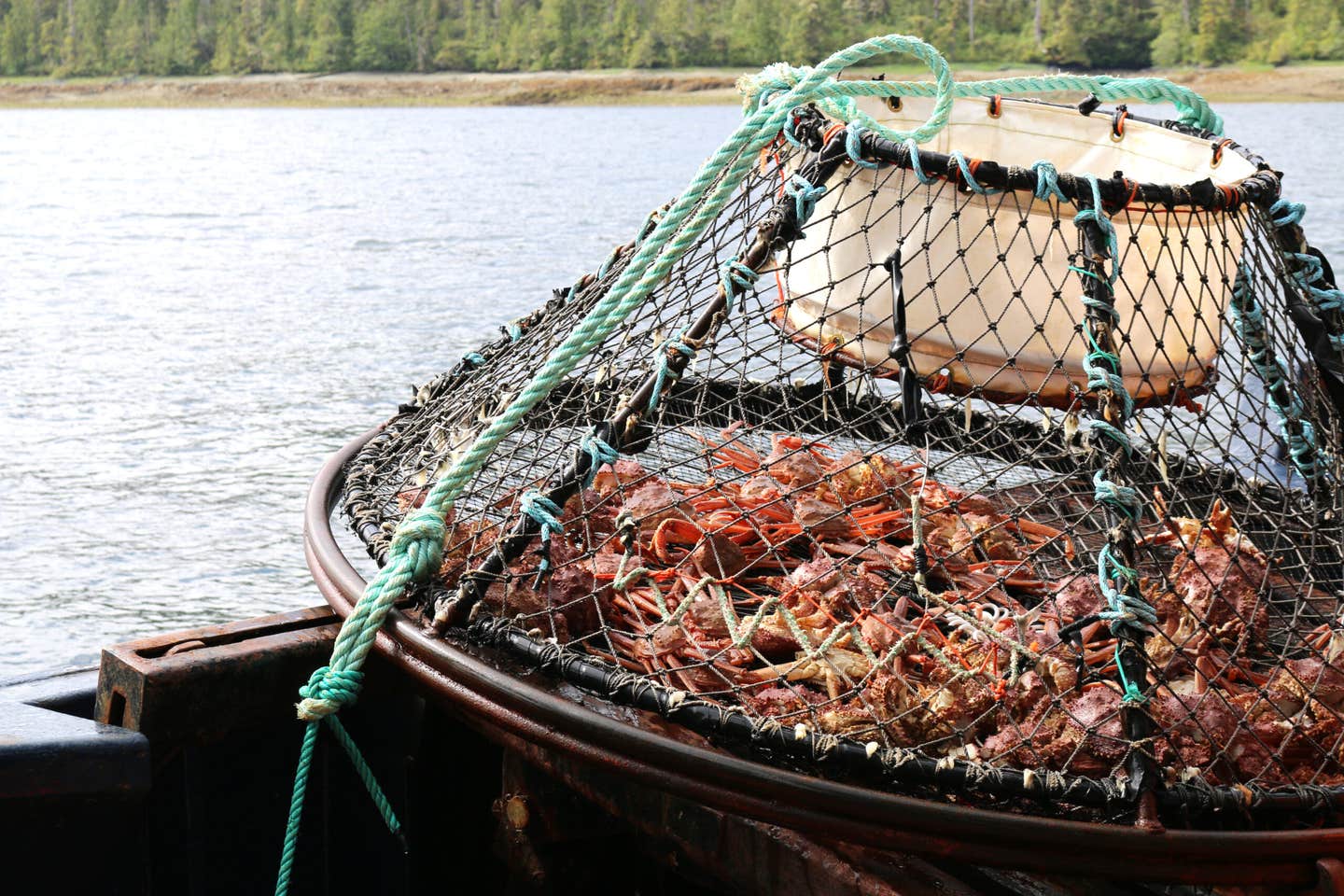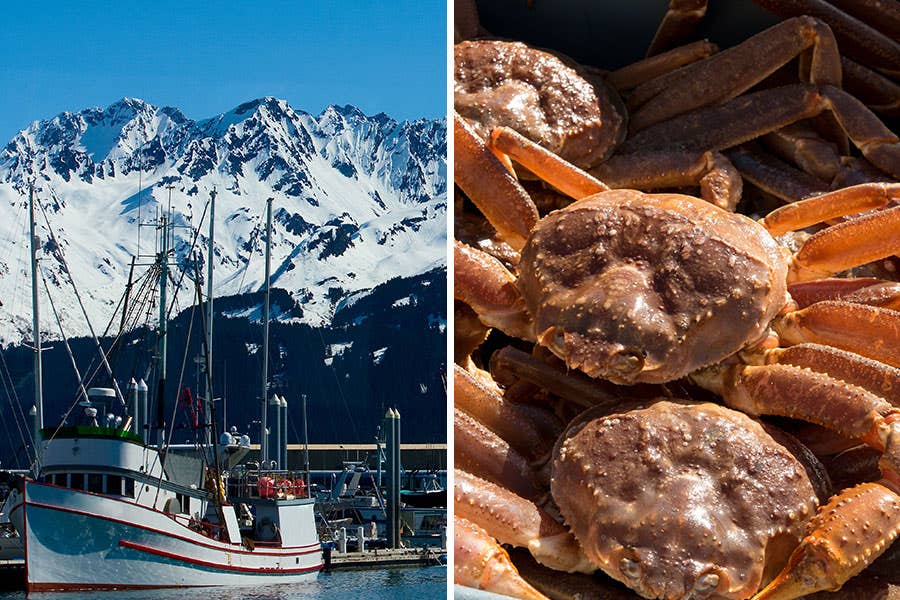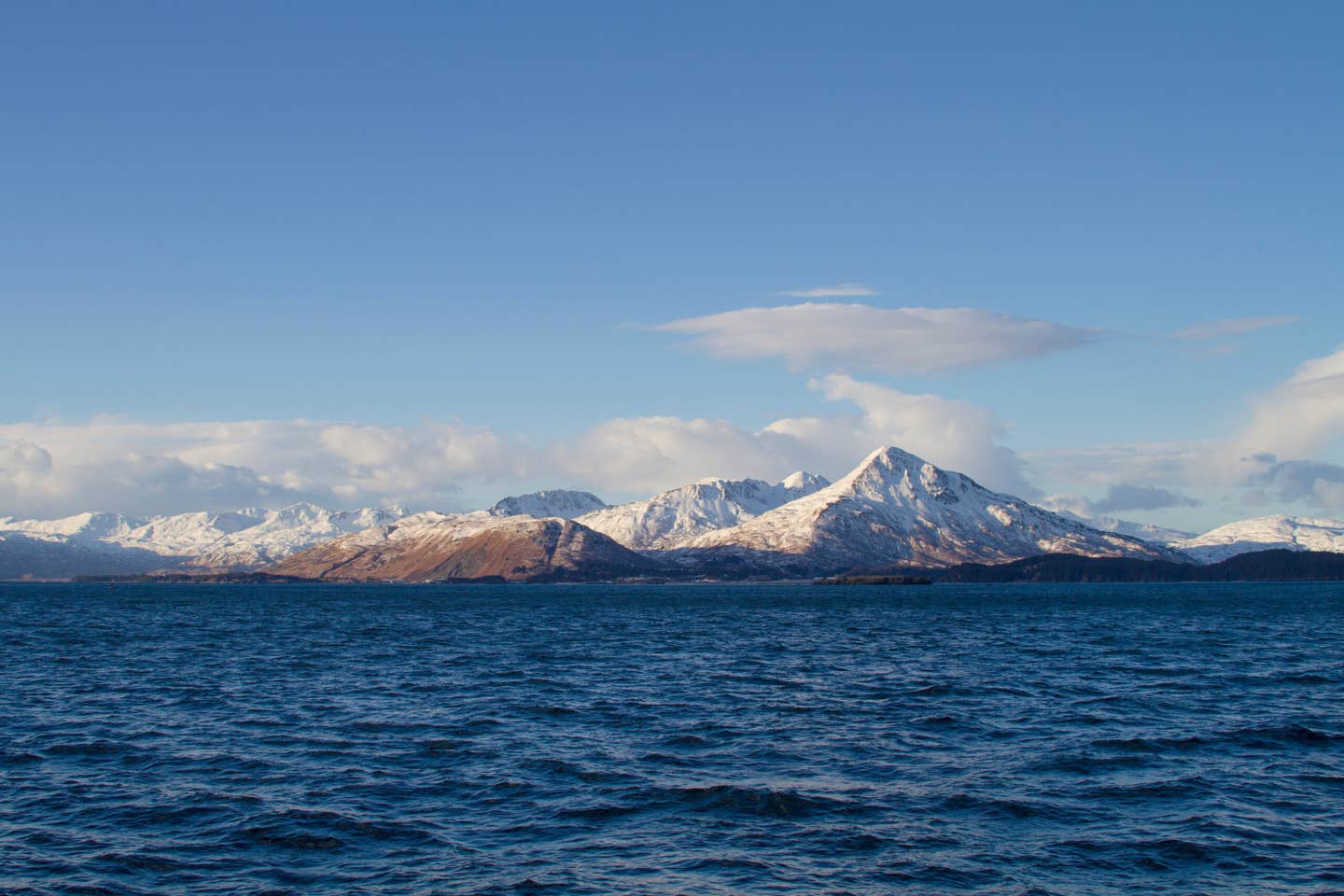
Billions of Snow Crabs Have Disappeared from the Bering Sea
The plight of the species sends a climate change warning that can’t be ignored. Crabbers, suppliers, and restaurants are bracing for the economic blow.
Snow crab numbers in the Bering Sea have dwindled by the billions in just the last few years. In response to the rapidly declining stock, Alaska officials canceled this year’s winter harvest of the crustaceans for the first time ever. As crabbers, distributors, and restaurants brace for the economic impact of lost business, the fishery’s closure is the latest red flag signaling the far-reaching impacts of human-caused climate change on marine life.
In 2018, the annual NOAA (National Oceanic and Atmospheric Administration) survey of snow crabs in the Bering Sea estimated the crustaceans’ numbers at 11.7 billion, according to Mike Litzow, director of the Kodiak Lab at NOAA Fisheries’ Alaska Fisheries Science Center. The 2019 survey, however, revealed a significantly reduced population, especially in immature crabs, a decline that coincided with that year’s unprecedented heat. By the time NOAA carried out its 2022 survey, the population had plummeted to 1.9 billion.
Crustacean physiology researcher Sherry Tamone has been studying snow crabs since 1999. “I was pretty shocked at the collapse,” she says, echoing industry-wide alarm.
To explain the population crash, most experts are pointing to rising ocean temperatures driven by climate change as the prime culprit. A number of not-yet-published research studies “each independently identified warming of the Bering Sea as the ultimate cause,” says Litzow. An article published by NOAA Fisheries also specified that “the crash of the Bering Sea snow crab stock leading to the fishery closure was related to the 2019 heat wave in the North Pacific. That heat wave as well as earlier heat waves have been attributed to climate change.”

As the crabs’ name suggests, the species has adapted to thrive in the ice-covered waters of the frigid Bering Sea. “As the temperature warms even by one degree, it increases the metabolism of [marine] animals,” says Tamone. That means it is possible that, as the animals’ caloric requirements increased, they may have run out of sustenance and starved.
Another factor that could have contributed to the population drop-off involves the growing presence of predators that prefer warmer waters. An ice-cold habitat typically safeguards juvenile crabs from being hunted by species like Pacific cod, but as temperatures increased in recent years, young crabs may have fallen prey to “predators that were previously not able to access the snow crab,” explains Litzow.
It’s also possible that the Bering Sea’s warming waters may be exacerbating the severity of certain diseases known to affect snow crabs, he adds.
Experts have largely ruled out overfishing as a factor in the population’s collapse. “It wasn’t overfishing because you’d still have a lot of the [immature] animals there,” says Tamone. Males of a certain size are the only crabs that the State of Alaska allows to be harvested, but the die-off impacted males, females, and juveniles. Litzow notes that fishery bycatch was also unlikely to have been a major component. “We have estimates for that source of mortality, and it’s way less than one half of one percent of the overall decline,” he explains.
There is hope that the cancellation of the snow crab harvest, which may extend out for years, will give the population a chance to recover. “We are seeing small crabs appear in a survey this year, and we're seeing temperatures back down to the 30-year average,” says Litzow. Looking ahead to four or five years down the line, “there's potential for rebound of the stock.”

Snow crab isn’t the only Alaska fishery closed this season. The harvest of Bristol Bay red king crab, a population Litzow says has been trending downward for over a decade, has also been canceled for the second consecutive year. The expected economic blow of the shutdown of these key fisheries prompted state politicians to request federal disaster designations and emergency funding that would help impacted businesses and workers ride out the financial losses. The Pribilof Island of St. Paul, home to a major crab processing community, also declared a state of emergency in anticipation of economic hardship.
In the case of snow crab, what Litzow describes as a “perfect storm of events” led to an environmental tipping point. “It's becoming apparent that we're getting more and more shocks to our system,” he says. In light of this, the biggest urgency now is to develop more effective crisis response strategies—ones that can provide financial relief, support continued research, and are adaptable to changing environmental conditions.
The question, says Litzow, is “how we design a system that can handle these surprises—because the climate science is very clear that there are more coming.”
Keep Reading
Continue to Next Story










